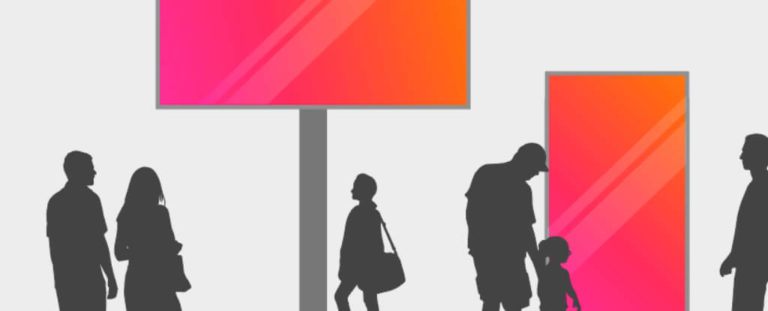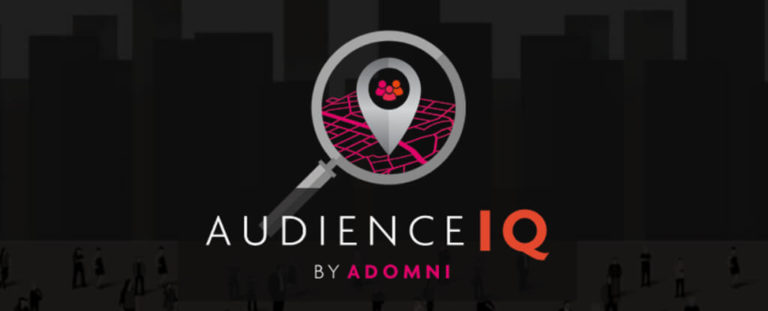Big ideas: “The next great advertising channel is the real world; Specifically, the digital screens that are popping up all around us” with Jonathan Gudai, CEO of Adomni
Published: March 1, 2019
Innovation in advertising and digital signage technology will result in more relevant ads being delivered to more people on a growing number of out-of-home screens. Screens will also become more intelligent as they will be able to detect the audience around them via cameras or mobile sensors, enabling the optimal ad to be shown. As an example, Nike will be able to launch two different ads, a men’s running shoe and a women’s running shoe, and intelligent software will determine the audience composition and the best ad to display. Additionally, ads shown on big screens such as billboards can be extended to mobile devices of the people that pass by the bigger screens, enabling a combo of big screen/little screen.
As a part of my series about “Big Ideas That Might Change the World in the Next Few Years,” I had the pleasure of interviewing Jonathan Gudai. Jonathan is the co-founder and CEO of Adomni, a company specializing in digital signage software and out-of-home advertising technology. Most of his career has been spent in the e-commerce and adtech sectors. With over 17 years of experience in web and mobile software development, Jonathan is passionate about creating engaging user experiences with innovative new approaches. Much of his career has been spent transforming customer experiences by shifting offline buying processes to online. He is a board of directors’ member of the DPAA, a member of the OAAA Innovations Committee, and an advisory board member for the University of Nevada Las Vegas School of Engineering. In 2015, Gudai was exiting his first company, which was a highly successful in e-commerce specializing in custom printed invitations and stationery. Before he even started exploring his next career move, his now business partner, Jonathan Fine (a serial entrepreneur who owns a few Las Vegas billboards) approached Gudai with a concept that Fine had been pursuing for several years. The big idea was to make billboard advertising affordable and accessible to everyone. The idea was to use online technology to simplify the overall process to find and buy ads on digital screens, while also making the ad inventory economically approachable to a wider group of advertisers. Gudai was initially skeptical of the idea, thinking that by 2015, there surely had to exist several internet options to find and buy ads on out-of-home digital screens. After doing the research, Gudai was surprised to find that the business of out-of-home advertising was still 99 percent manual and operating almost completely offline. And so began the Adomni journey.
...
Thank you so much for joining us! Can you share the most interesting story that happened to you since you began your career?
Good question. It’s tough to find the “most” interesting story of all time. But there is one that comes to mind from 2017. Adomni had just launched its online buying platform the year prior. It was ready to showcase how easy the process was to buy billboards and demonstrate the platform’s ability to handle high volumes of campaigns.
As Valentine’s Day was fast approaching, the marketing team said, “What if we made it possible for anyone to book a billboard to put up their own Valentine’s Day message to their loved ones?” While the type of buyer of billboard ads wasn’t the target market for Adomni, it thought it would be interesting to see how many people, who have never bought billboards in the past, would try it. If they could do it, anyone could.
Less than a week before Valentine’s Day, the company issued a local press release to let the media know about the promotion. The press release got picked up by the largest newspaper in Las Vegas and, before long, over 640 different people had created a billboard ad and made a booking. On Valentine’s Day, as hundreds of couples flocked to the billboards to see their ad on a 48-foot screen, traffic was blocked, selfies were in full force, social media was lighting up and, eventually, the local news caught wind of it and news trucks started rolling up. It was both a fun promotion and a validator that the process to buy billboards can be made easy and achievable for anyone.
Can you tell us about your “Big Idea That Might Change the World”?
We believe that the next great advertising channel is the real world; specifically, digital screens that are popping up all around us. Over 70 percent of our waking time is spent out of our home. Much of that time is spent traveling between places or in areas that feature digital screens. As digital screens have become less expensive, they have also become more ubiquitous − from roadside billboards to screens in retail stores, bars/restaurants, gas stations and office buildings. At the same time, anonymous mobile data is unlocking new opportunities to understand audience behavior and patterns. Adomni’s big idea is to connect the dots for advertisers and media owners (publishers) by providing an easy online platform to target audiences or locations and launch better advertising campaigns. Advertisers will have the same level of ease and convenience as booking a property on Airbnb or hailing an Uber ride.
How do you think this will change the world?
Innovation in advertising and digital signage technology will result in more relevant ads being delivered to more people on a growing number of out-of-home screens. Screens will also become more intelligent as they will be able to detect the audience around them via cameras or mobile sensors, enabling the optimal ad to be shown. As an example, Nike will be able to launch two different ads, a men’s running shoe and a women’s running shoe, and intelligent software will determine the audience composition and the best ad to display. Additionally, ads shown on big screens such as billboards can be extended to mobile devices of the people that pass by the bigger screens, enabling a combo of big screen/little screen.
Keeping Black Mirror and the Law of Unintended Consequences in mind, can you see any potential drawbacks about this idea that people should think more deeply about?
By opening the out-of-home advertising market to more people, there is bound to be a significant increase in the diversity of advertisers and ad creative artwork. As a result, there will be a more pressing need for a faster and better creative approval and rejection process. Out-of-home ads are shown on public screens, so they need a tight moderation process. Media owners will need to adapt their internal handling of these.
At the same time, cybersecurity systems need to be air tight to ensure that bad actors don’t get access to put nefarious content on the public screens.
Was there a “tipping point” that led you to this idea? Can you tell us that story?
The tipping point happened four years ago. Like many of his generation, Gudai is an avid user of Amazon, Airbnb and OpenTable. Inspired by these companies and their ability to aggregate a huge quantity of products, rental properties and restaurants in one place, and connect buyers and sellers seamlessly, he and his co-founders set out to achieve the same thing with billboards and digital screens. The three key ingredients are 1) a huge inventory, 2) easy user experience to find and buy the ads and, 3) a great self-service platform backed by high-quality client support.
What do you need to lead this idea to widespread adoption?
There are several forces at play to fulfill the vision of self-service buying and selling of out-of-home advertising. It starts with inventory availability. There is no shortage of digital screen ad inventory, but the ability to connect to it is the primary need. After inventory is available in one place at scale, the second requirement is an easy user interface to find and buy the inventory and manage ad campaigns. The more the process resembles what is currently being done in other online ad platforms or e-commerce sites, the faster and easier the adoption curve. Lastly, the advertising world needs to better understand the importance of out-of-home advertising and its ability to drive results. To get the word out, collectively, we need to write and share case studies and testimonials such as these.
What are your “5 Things I Wish Someone Told Me Before I Started” and why.
- “Programmatic advertising” as a phrase means different things to different people.
- Some are scared that it will drive down ad prices and value; others are excited about the idea of it bringing in huge volumes of new revenue. Adomni has had to spend a lot of time explaining why programmatic advertising is beneficial, if done right.
- Digital signage networks are extremely diverse in the software systems in use.
- There are a few big software companies whose products are widely in use, but also many smaller ones and many in-use legacy versions. Adomni has had to build software that is both robust and cross-platform compatible.
- Advertisers have strong beliefs that many digital signs, such as billboards, are expensive and unattainable.
While they were right about these facts in the past, this is no longer true because of new platforms like Adomni that have automated the process and lowered the entry costs for advertisers.
- The importance of mobile data in selling out-of-home advertising ads.
- Digital advertisers have evolved their buying strategies to targeting audiences, de-emphasizing the specific channels or media platforms where ads are served. For out-of-home ads to be included in this way of buying, mobile data needs to be woven into the planning, execution and management of ad campaigns.
- How the one-to-many nature of out-of-home advertising creates challenges in explaining the advertising medium to digital ad buyers.
- The M in CPM pricing of ads needs clear explaining for out-of-home advertising. While independent auditing firms such as Nielsen and Geopath provide estimated audience metrics, there still is a gap for a lot of newer digital signage networks that are not yet audited. Mobile data will likely be the solution, as several software companies are collecting mobile device movement data and will try and provide audience count estimates.
The future of work is a common theme. What can one do to “future proof” their career?
Always be willing to learn new skills and adopt new systems. Accept that failure is part of the process, and don’t let your failures overshadow your current outlook and future activities. Take data-driven approaches and be able to answer the question “Why?”
Based on the future trends in your industry, if you had a million dollars, what would you invest in?
Good people. With a strong team and a clear vision, the sky’s the limit.
Which principles or philosophies have guided your life? Your career?
A great product speaks for itself and encourages organic growth and shareability. Commit to openness and transparency. Great communication, consistent operating systems, and well-defined goals and plans drive results.
Can you share with our readers what you think are the most important “success habits” or “success mindsets”?
Take an open mindset approach to business and your career. Write down your goals and plans such as using management systems like OKRs. Make your objectives and key results internally transparent. Realize that success in the workplace is done in teams so foster a group-oriented approach. Chop up big ideas into small chunks. It feels great to check off lots of tasks along the way to achieving something big.
Some very well-known VCs read this column. If you had 60 seconds to make a pitch to a VC, what would you say?
Digital out-of-home advertising is the second fastest growing ad medium, yet it’s massively undervalued. Digital screens are appearing everywhere, as consumers are now spending more time out of their homes than ever before. Yet, currently, less than 2 percent of digital out-of-home ads are sold online/programmatically. This is a huge contrast to the way digital online ads are bought, where 80+ percent is bought programmatically/online.
Technology will play a huge role in growing the $31 billion a year out-of-home advertising industry, with many industry experts predicting a two to three times growth rate in the next five years.
Automated buying platforms are the future for the out-of-home advertising industry, empowering advertisers to find, buy and manage campaigns easily, quickly and with any budget. Adomni is aggregating digital signage inventory from around the world and providing an easy online buying experience for brands and agencies to transact. With mobile data technology, audiences can be targeted, and detailed analytics reports are available. Pairing ads on large-format screens with ads on mobile devices has proven to be a winning combination. In a world where convenience rules the roost, Adomni is leading the way in the out-of-home industry.
Full Article on Authority Magazine
To get the latest updates on out of home advertising, digital marketing and technology, follow us on:
Or sign up for our newsletter.


